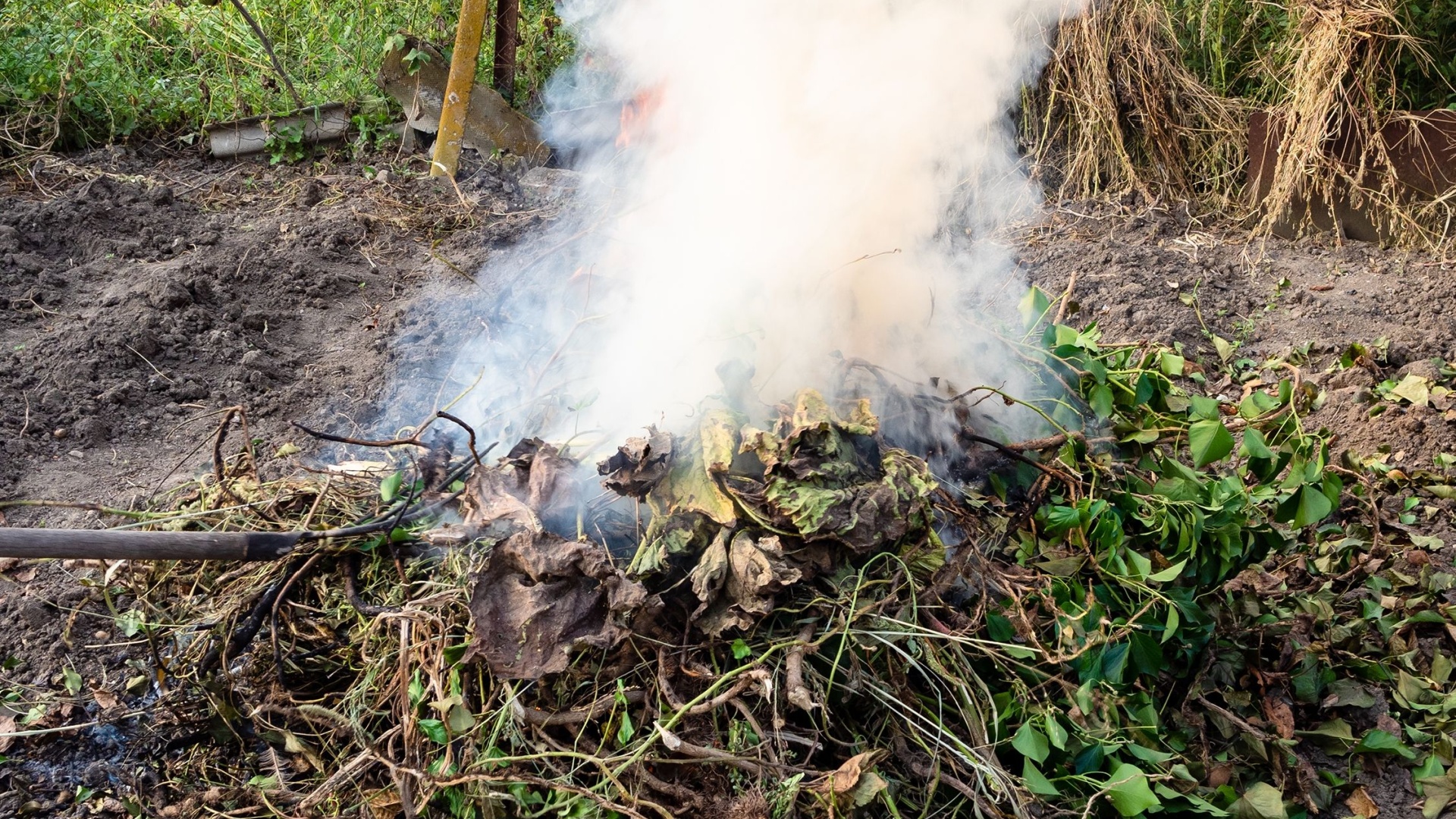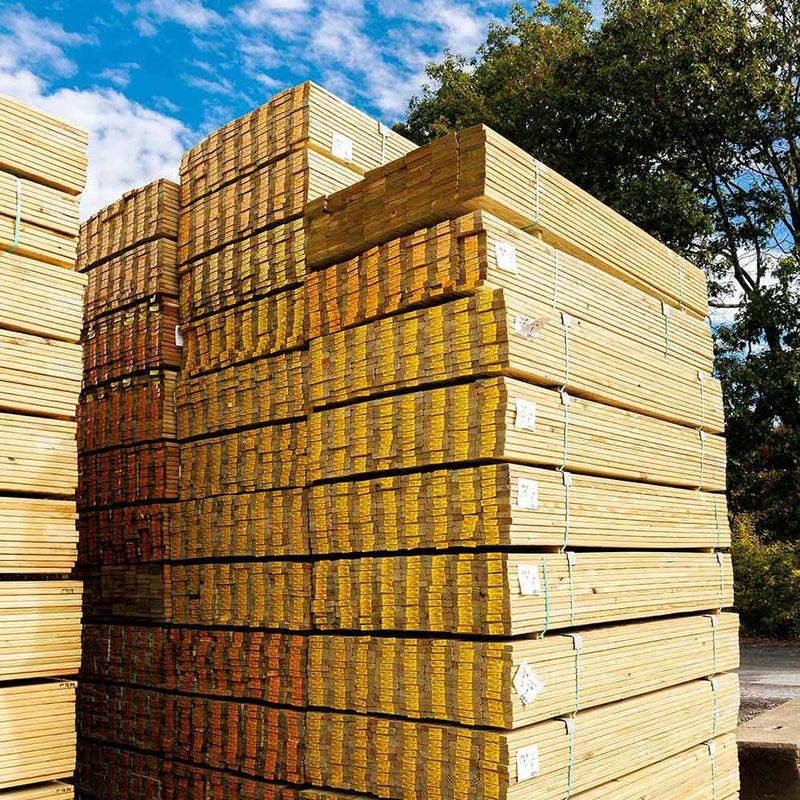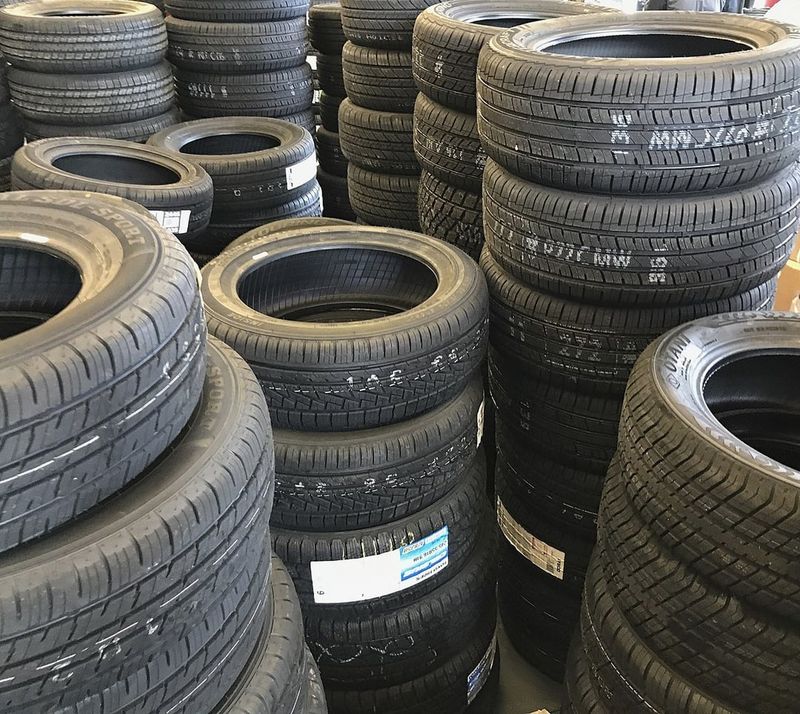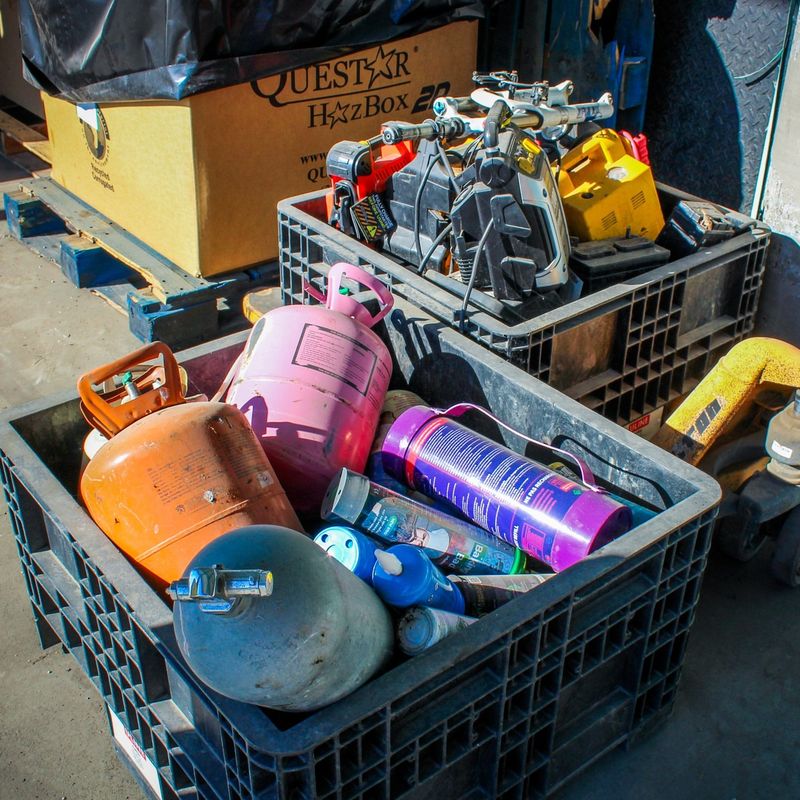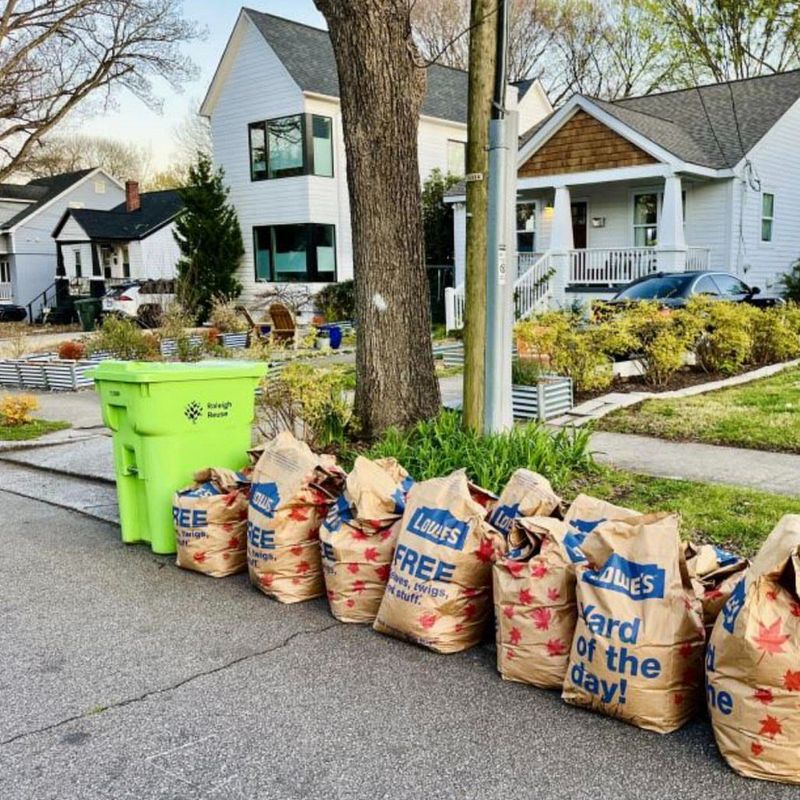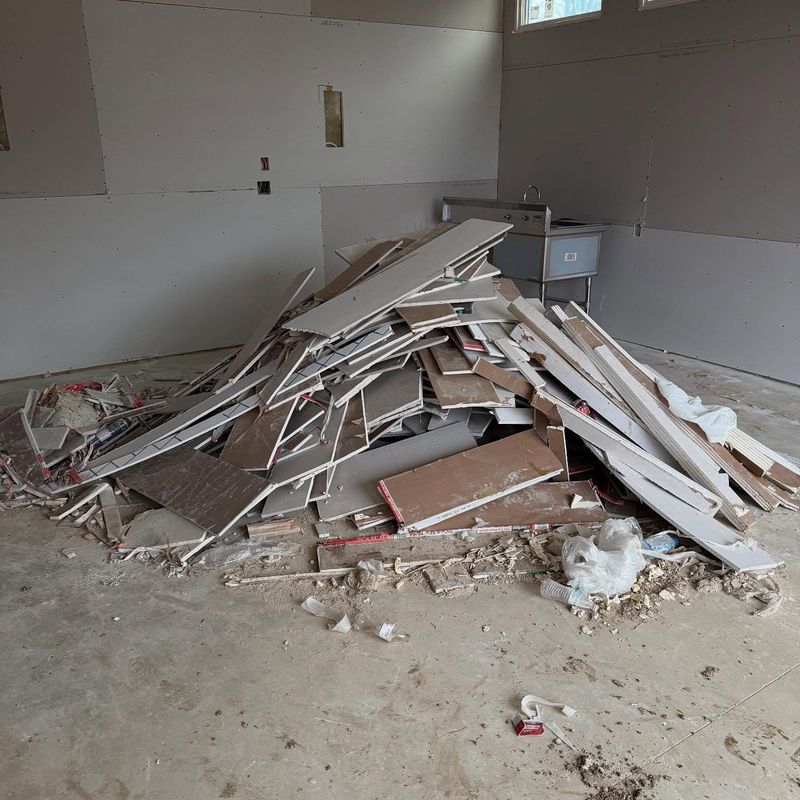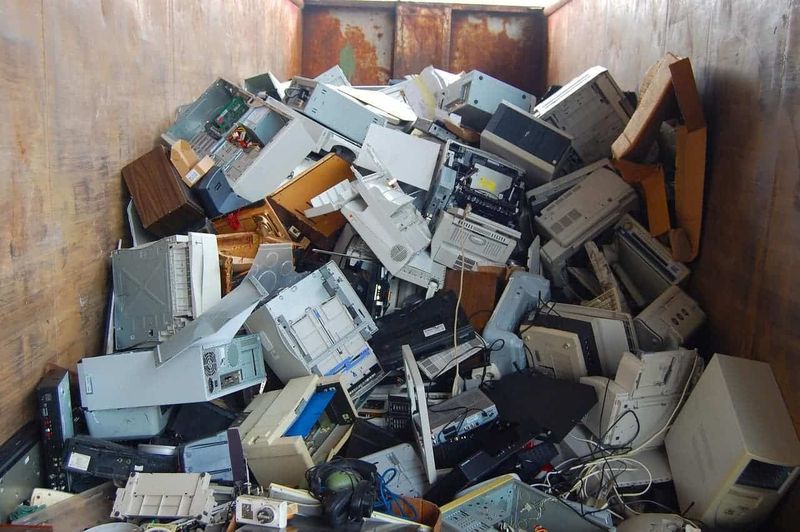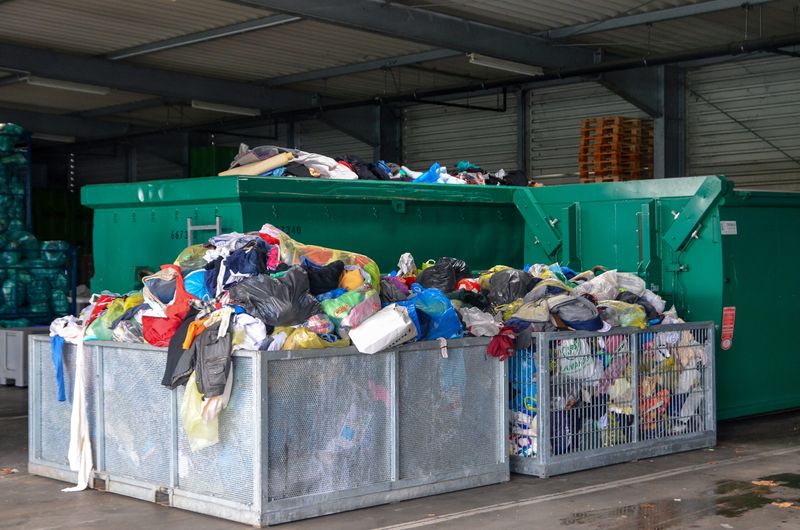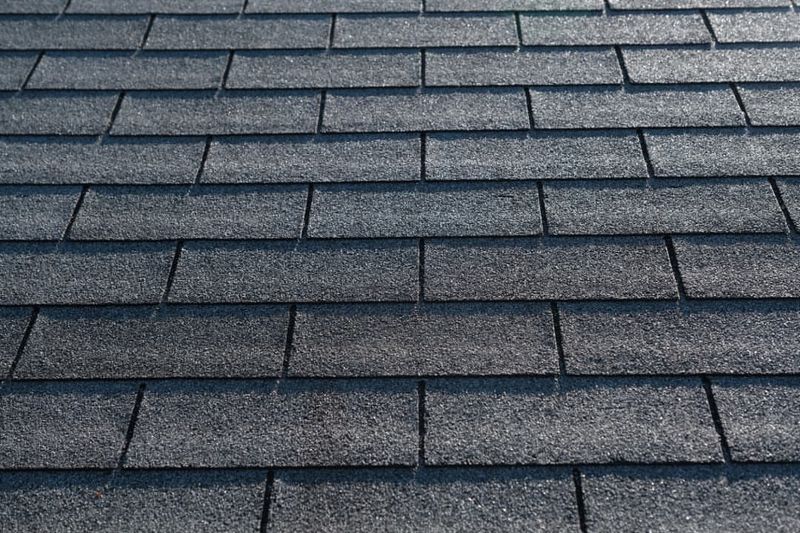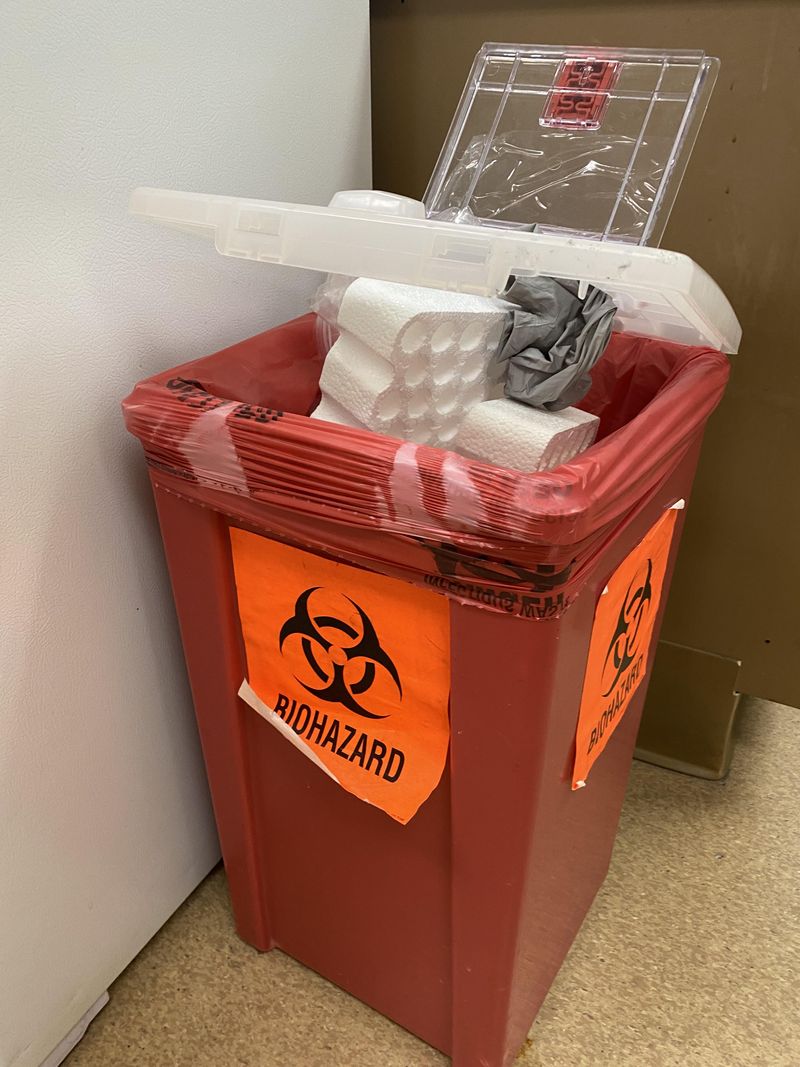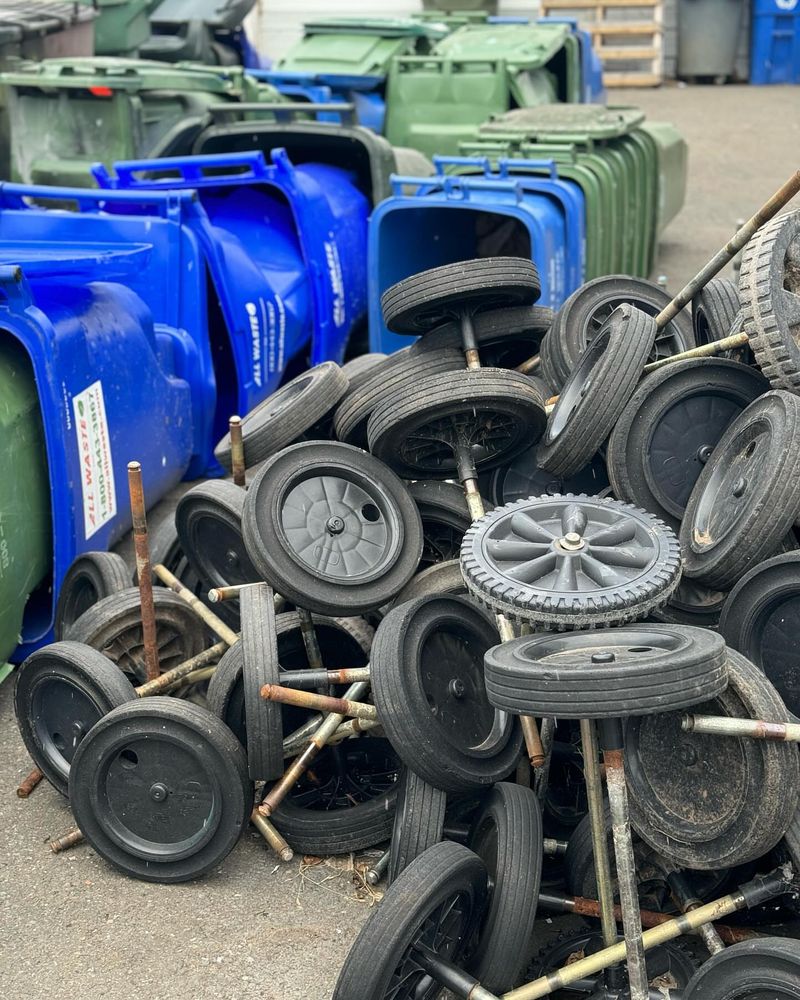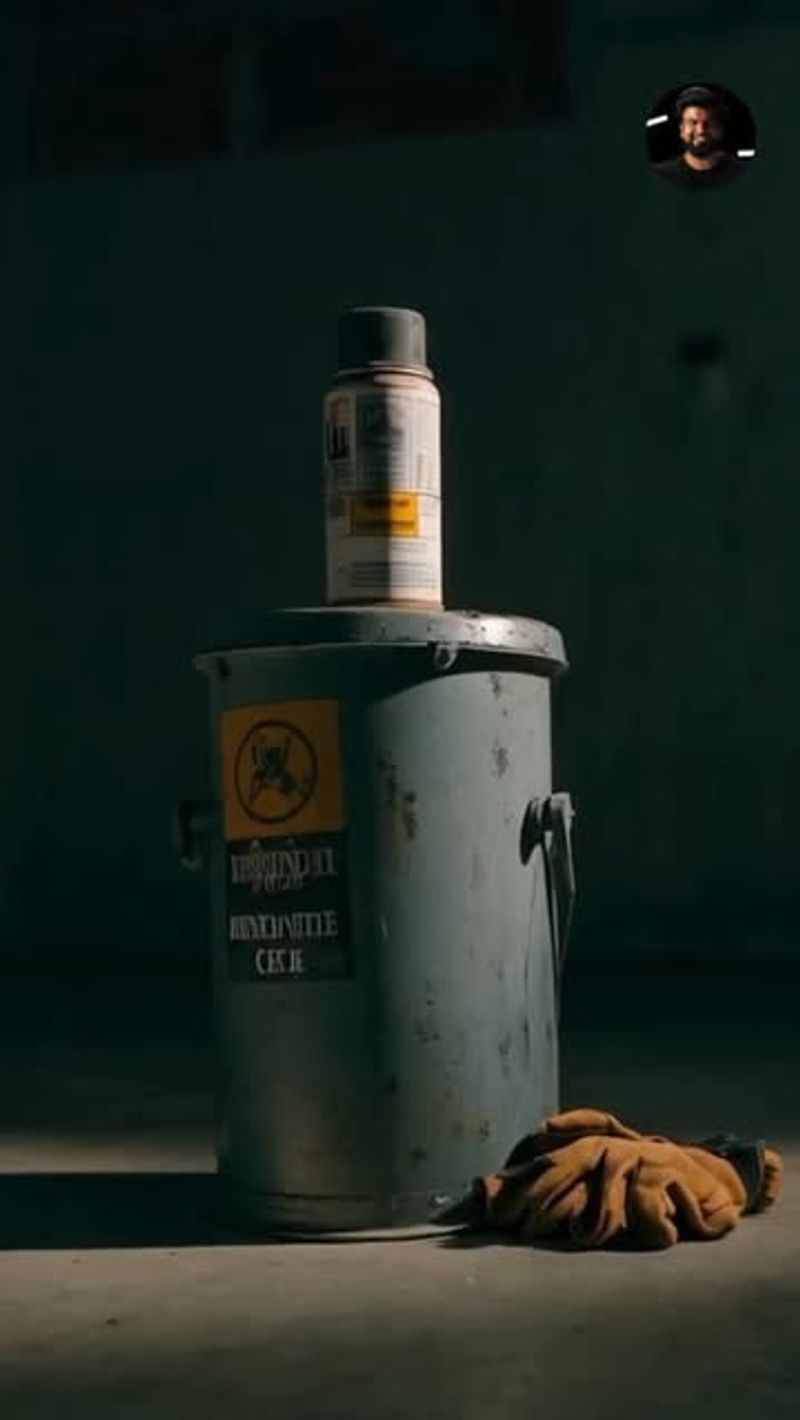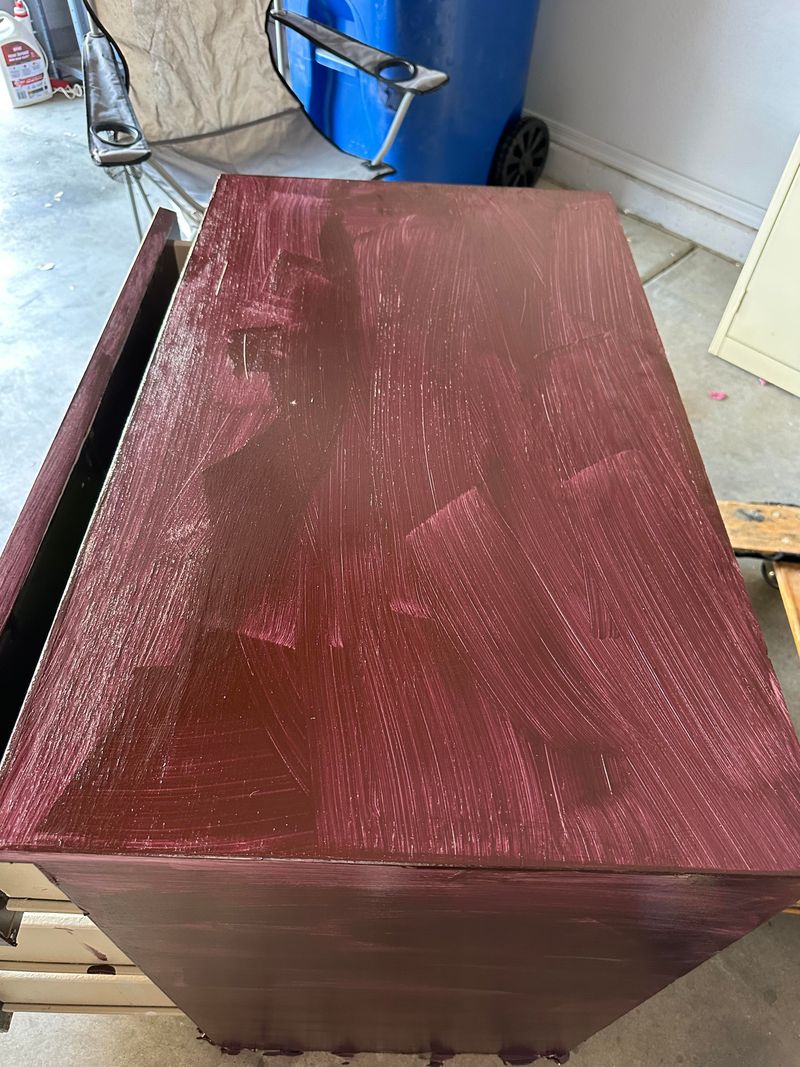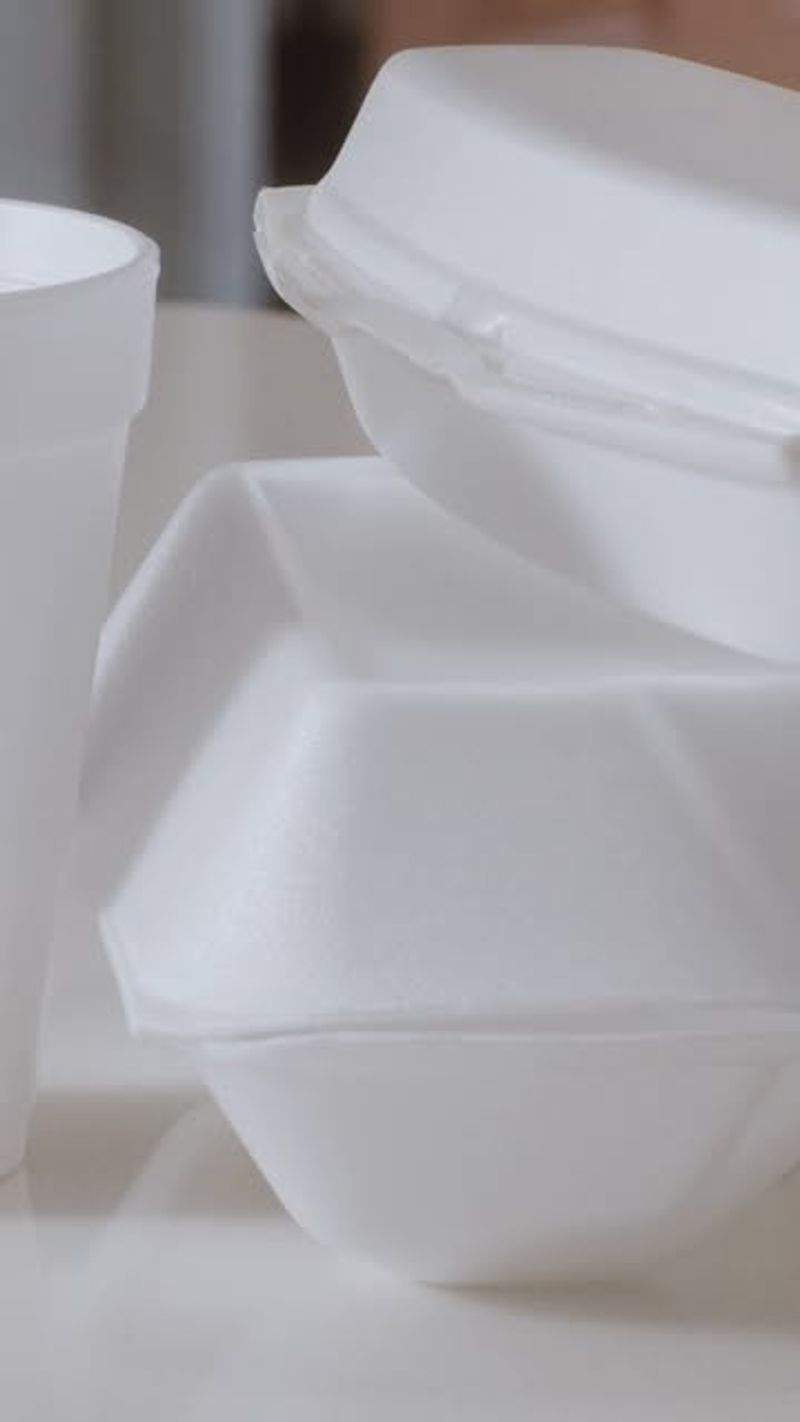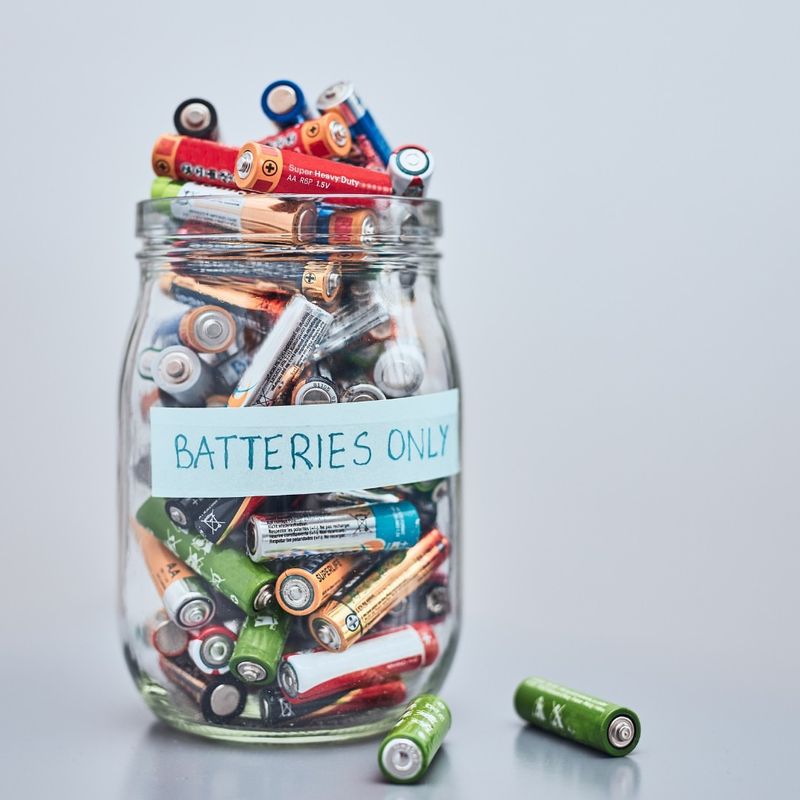Just because it burns doesn’t mean it should. Backyard fires seem harmless—until you toss in something toxic, illegal, or downright dangerous.
These 17 things might seem okay to burn (and yes, a lot of people do it anyway), but they can harm your health, damage your yard, or even land you a fine. Here’s what to keep out of the flames.
1. Treated Lumber
Wood that’s been pressure-treated contains arsenic, chromium, and other chemicals that release toxic fumes when burned. These chemicals were designed to prevent rot and insect damage, not end up in your lungs!
Many homeowners toss old deck boards or fence posts into bonfires without realizing they’re releasing cancer-causing compounds into the air. The ash left behind is also hazardous and can contaminate soil and groundwater for years.
2. Plastic Containers
Burning plastic releases dioxins, furans, and other cancer-causing chemicals that linger in the environment for decades. Even small amounts can cause significant harm to your respiratory system and nervous system.
Empty yogurt containers, milk jugs, and takeout boxes might seem harmless, but they create some of the most dangerous air pollutants known to science. The black smoke you see when burning plastic is a visible warning of the invisible toxins being released.
3. Painted Wood
Old furniture or painted wood trim might seem like good firewood, but the paint—especially in older homes—often contains lead. When burned, this lead becomes airborne and can be inhaled by everyone nearby.
Children are particularly vulnerable to lead poisoning, which can cause developmental delays and behavioral problems. Even modern paints release harmful chemicals when burned, including volatile organic compounds that irritate lungs and can trigger asthma attacks.
4. Rubber Tires
The thick black smoke from burning tires isn’t just unpleasant—it’s packed with carcinogens and respiratory irritants. One burning tire can pollute thousands of gallons of air with toxins like styrene, butadiene, and benzene.
Some rural homeowners burn tires to dispose of them or as fire starters, creating hazardous conditions for miles around. The oils released can also seep into soil and contaminate groundwater, creating environmental problems that last generations.
5. Household Garbage
The mixture of plastics, foils, food scraps, and other materials in your trash creates a toxic soup when burned. Modern packaging contains synthetic materials that weren’t designed to be incinerated in low-temperature backyard fires.
Rural residents sometimes burn trash to avoid disposal fees, not realizing they’re creating far costlier health problems. The incomplete combustion in backyard fires creates particulate matter that can lodge deep in lungs and enter the bloodstream.
6. Yard Waste During Bans
Even natural materials like leaves and branches become problematic during dry seasons or air quality alerts. Many communities issue temporary burning bans when conditions make smoke particularly hazardous or fire risks are high.
Despite clearly posted warnings, some homeowners continue yard burning during these periods. This not only risks spreading wildfires but also compounds air quality problems when atmospheric conditions trap smoke near the ground, affecting neighbors with respiratory conditions.
7. Glossy Magazines
The shiny pages of magazines contain clay coatings and chemical treatments that release toxins when burned. The colorful inks contain heavy metals like cadmium, lead, and mercury that become airborne in the smoke.
Many people toss old magazines into fires thinking paper is harmless. Unlike regular newsprint, however, these glossy publications create harmful emissions. The small particles released can trigger asthma attacks and worsen existing heart and lung conditions in sensitive individuals.
8. Construction Debris
Leftover materials from home projects often contain a dangerous mix of treated wood, paints, adhesives, and synthetic materials. Construction waste frequently includes PVC, which releases hydrochloric acid and dioxins when burned.
Contractors sometimes illegally burn job site waste to save on disposal fees. The complex mixture of modern building materials creates unpredictable toxic emissions. Even small amounts of certain construction adhesives or insulation can release formaldehyde and other carcinogens when burned.
9. Electronics and Appliances
Old TVs, computers, and appliances contain circuit boards, wiring, and components filled with heavy metals and flame retardants. When burned, these release some of the most dangerous pollutants known, including mercury, lead, and brominated compounds.
Some people try burning electronics to extract valuable metals like copper. This dangerous practice creates persistent environmental toxins that can cause neurological damage and cancer. The residual ash is classified as hazardous waste and requires special disposal methods.
10. Chemically Treated Fabrics
Many modern fabrics contain synthetic fibers, flame retardants, and stain-resistant treatments that create toxic fumes when burned. Upholstery, curtains, and carpets are particularly problematic due to their chemical treatments.
Homeowners sometimes burn old furniture without considering what’s in the fabric. Synthetics like polyester and nylon are essentially plastic and release similar toxins when burned. Even natural fabrics may contain dyes and treatments that create harmful emissions when incinerated.
11. Asphalt Shingles
Roofing materials contain petroleum products, fiberglass, and various adhesives that release carcinogens when burned. The thick, oily smoke from burning shingles contains polycyclic aromatic hydrocarbons linked to several types of cancer.
After roof replacements, some homeowners illegally burn old shingles rather than paying disposal fees. Beyond the toxic air pollution, the melting asphalt can contaminate soil with chemicals that persist for decades. One bundle of burning shingles can pollute thousands of cubic feet of air.
12. Medical Waste
Bandages, medication packaging, and other medical items create dangerous emissions when burned. Some contain plastics that release dioxins, while others might harbor pathogens that can be spread through smoke particles.
Home caregivers sometimes burn medical waste out of convenience or privacy concerns. This practice risks spreading airborne contaminants to neighbors. Medications themselves can create toxic compounds when burned, releasing active pharmaceutical ingredients into the air in altered, potentially more harmful forms.
13. Automotive Products
Used motor oil, antifreeze, and automotive fluids contain numerous toxic compounds that become airborne when burned. Just one quart of motor oil can contaminate thousands of gallons of water if its residue leaches into groundwater.
Some home mechanics burn these fluids as a disposal method or even use them as fire accelerants. The practice creates respiratory irritants and releases heavy metals present in used automotive fluids. The black smoke contains particulate matter that can trigger asthma attacks and worsen heart conditions.
14. Aerosol Cans
Empty spray paint, insecticide, or hairspray cans contain residual propellants and chemicals that can explode when heated. Even “empty” cans retain enough pressure and flammable materials to cause serious injuries.
People sometimes toss these into fires without considering the dangers. The high-pressure contents can cause metal fragments to shoot out like shrapnel when the container ruptures. Beyond physical injury risks, the chemicals inside create toxic fumes when burned at low temperatures.
15. Particleboard Furniture
Cheap furniture made from particleboard or MDF contains formaldehyde-based glues that release toxic gases when burned. These pressed-wood products are essentially wood chips held together with chemical adhesives.
When old bookshelves or cabinets get tossed into backyard fires, they release formaldehyde and other volatile organic compounds. The smoke irritates eyes, lungs, and mucous membranes. Long-term exposure to formaldehyde is linked to cancer, making this seemingly innocent wood particularly dangerous when burned.
16. Styrofoam Packaging
Styrofoam (expanded polystyrene) releases styrene and other toxic chemicals when burned. The lightweight material melts into a napalm-like substance that sticks to surfaces and continues releasing toxins.
Many people don’t realize that burning styrofoam creates 90 times its volume in toxic smoke. The black soot contains compounds that damage the nervous system and liver. What seems like a quick way to dispose of bulky packaging creates serious health hazards for everyone breathing the air nearby.
17. Batteries
Household batteries contain metals like mercury, cadmium, and lithium that become airborne toxins when burned. These metals can cause neurological damage, kidney problems, and other serious health issues when inhaled.
Some people toss batteries into fires not realizing they’re creating hazardous air pollution. The heat causes batteries to rupture, releasing their contents explosively. Modern lithium batteries pose additional dangers, as they can violently ignite and are extremely difficult to extinguish once burning.

